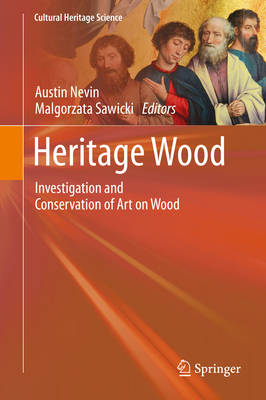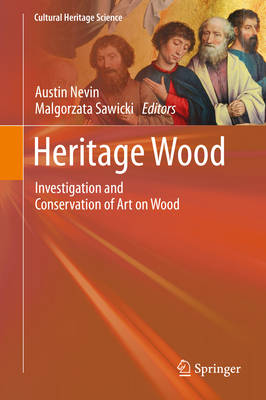
- Afhalen na 1 uur in een winkel met voorraad
- Gratis thuislevering in België
- Ruim aanbod met 7 miljoen producten
- Afhalen na 1 uur in een winkel met voorraad
- Gratis thuislevering in België
- Ruim aanbod met 7 miljoen producten
Heritage Wood
Investigation and Conservation of Art on Wood
Omschrijving
This volume highlights recent research efforts in the conservation and investigation of works of art on wood. Through eleven case studies it showcases different experimental methods ranging from X-ray analysis of objects to the study of cross-sections made from micro-samples.
New research focusing on the technical study, treatment and assessment of works of art on wood in its many forms is featured in this edited volume. Technical studies include the attribution and investigations of a triptych by Hans Memling and a sculpture from workshop of Michel and Gregor Erhart, decorated Syrian rooms, and investigations of finely carved Gothic wooden objects. Synchrotron-based methods are presented for studying the alteration of 19th c. verdigris in Norway, and multi-analytical methods are employed for the investigations of 16th to 19th c. East Asian lacquer from the Kunsthistorisches Museum in Vienna. Novel methods for the cleaning of gilded surfaces using gelsand emulsions are shown, as are innovative strategies for the consolidation for waterlogged wood, providing key data for the assessment of risks and benefits of new methods, and the short and long-term effects on gilding layers and archaeological wood. The book clearly shows how collaboration between engineers, physicists, biologists and chemists and conservators of different types of materials can lead to new research in conservation science. This book is crucial reading for conservators and conservation scientists, as well as for technical art historians, providing key methodological case studies of polychromy from different temporal and geographical contexts.
Specificaties
Betrokkenen
- Uitgeverij:
Inhoud
- Aantal bladzijden:
- 226
- Taal:
- Engels
- Reeks:
Eigenschappen
- Productcode (EAN):
- 9783030110536
- Verschijningsdatum:
- 28/10/2019
- Uitvoering:
- Hardcover
- Formaat:
- Genaaid
- Afmetingen:
- 163 mm x 237 mm
- Gewicht:
- 453 g

Alleen bij Standaard Boekhandel
Beoordelingen
We publiceren alleen reviews die voldoen aan de voorwaarden voor reviews. Bekijk onze voorwaarden voor reviews.











